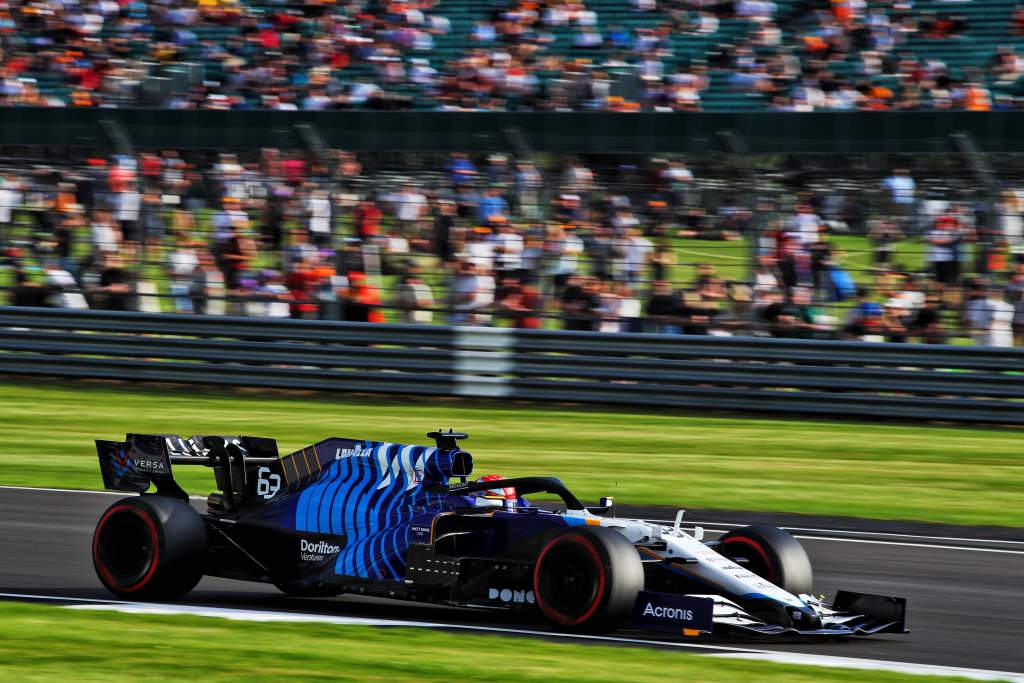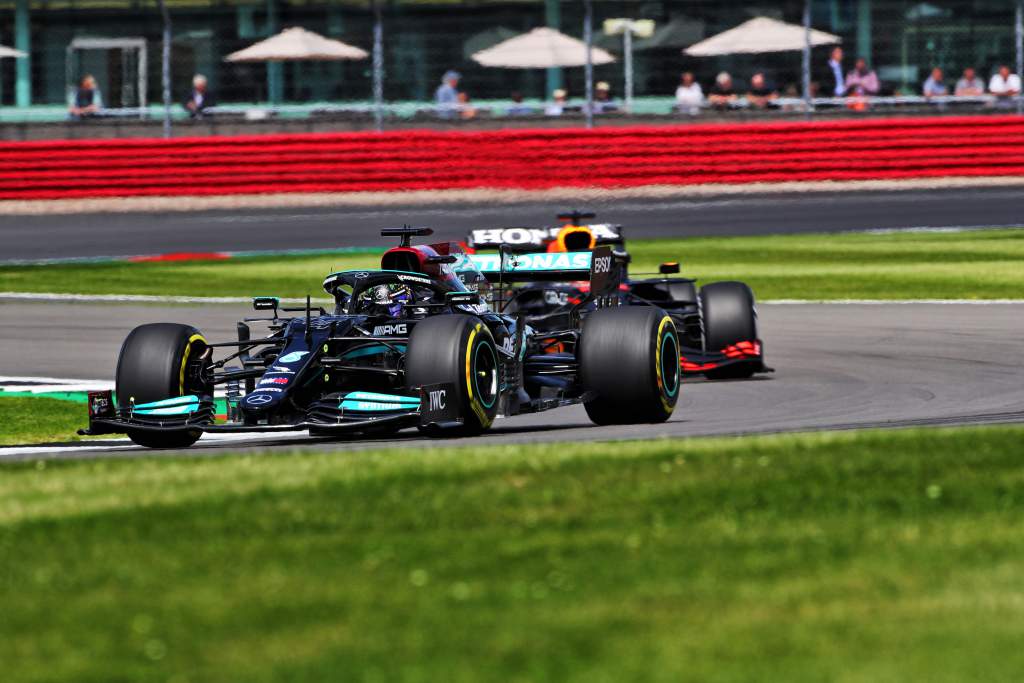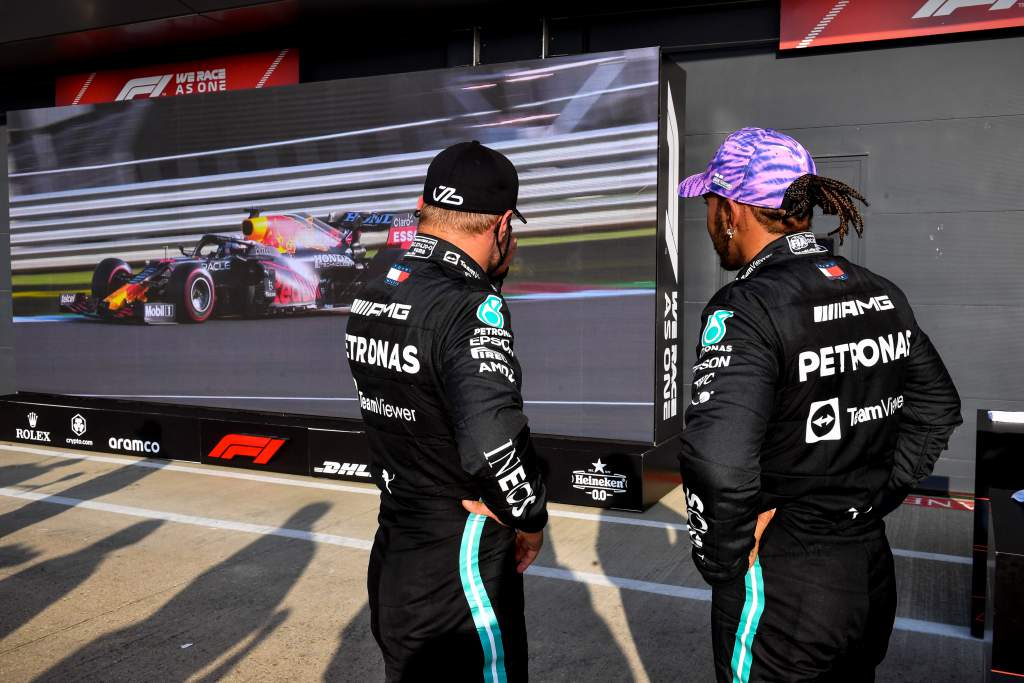Up Next

Ostensibly Friday qualifying for Formula 1’s first sprint race was Lewis Hamilton vs Max Verstappen.
But it was also surely about Valtteri Bottas vs George Russell, cruel though that contest is – for Russell, with perfect timing delivered a quite sensational Q2 lap to put his Williams into Q3 for the second successive race while a few minutes later Bottas playing the team player role to perfection was a crucial part in earning Hamilton that important and significant pole position over Verstappen.
It all just underlines in capitals the agonising choice facing (or possibly has already been faced) by Mercedes in finalising its driver line up for next year and beyond.
Russell had the Silverstone crowds roaring their approval as he crossed the line to go seventh fastest in Q2, the cheers louder even for those of Hamilton heading that session.
It was a stunning achievement to lap a Williams within a few hundredths of Sergio Perez’s Red Bull. It was a lap of technical perfection, getting the car rotated early into the slow corners just like in Austria two weeks ago but combining it with committed precision through the Maggotts/Becketts sequence where his placement and manipulation of the Williams allowed him to be super-late in coming off the power into the second part of the sequence, trimming only the bare minimum of speed very begrudgingly.
Throughout the lap his one-sweep steering style carried a smooth momentum even as the Williams was nervously twitching.

The car carried the sort of crowd-frenzying body language that recalled Silverstone history from Nigel Mansell – or Hamilton himself. This was in a car the team did not have high hopes of getting out of Q1 and in which Russell found a stunning 0.6s from his previous run, his performance building to a crescendo at the critical time – both from the perspective of the weekend and his future. He followed it up with eighth-fastest time in Q3.
“It was an exciting feeling and every lap I can see them cheer and which is something I have never experienced in my life,” he recalled, still thrilled. “…it was such a great feeling and I want more of it.
“I mean we were slowest in practice on true pace and P8 in qualifying. We’ve got the session tomorrow to sort of have a build up to the sprint race but it’s going to be interesting.”
It was a lap of a driver who looks absolutely ready to step up to the big time, confirmation of his sensational form in the Mercedes in his late-notice stand-in role at Sakhir last year.
He looked every inch a very credible succession plan to Hamilton that Mercedes should probably have in place. After three seasons struggling to transcend his limited circumstances, how could Mercedes possibly justify not signing him now?
That’s how it all felt in the euphoria of that moment.
But then a few moments later Bottas showed again what he brings to the party. Even with its upgrades and around a circuit which probably suits its traits better than Austria, getting the Mercedes on pole was going to be a stretch. It was going to require perfect execution – and not a little hope.

Hence Hamilton was in the sim again on Friday morning (he’d been in there on Tuesday too, trying out a rear wing level that was lower than Red Bull’s, in contrast to Austria), trying to fine-tune for qualifying.
The success of that set-up together with the bargeboard and floor improvements was probably the major part in the success of their quest. That and Verstappen apparently losing front tyre temperature as the track cooled into the evening.
But Bottas was an important part of the plan too – on a day when pole might have been decided by hundredths. When choosing the sequence of who goes out first in Q3 – the Mercedes duo take turns in who has first choice and have done since first being paired together in 2017 – the way it has worked out this year conveniently gave Hamilton the Silverstone choice.
There is time to be made from the tow here – as much as a couple of tenths. That indeed is what Hamilton found from his team-mate’s assistance. He squeezed out Verstappen for pole by 0.075s.
Had he not had his moment at the final turn on his second run (which lost him 0.35s), he’d have been on pole by 0.3s, two-thirds of which would have been from Valtteri’s tow. The tow ended up being more critical than that. Instead of amplifying Hamilton’s advantage, it rescued it.

Asked if he’d played his part in assisting Hamilton, Bottas said as much as he needed to: “Yeah, it was for the best result for the team.”
He was, as ever, dignified and gracious – and maybe also slightly deflated.






